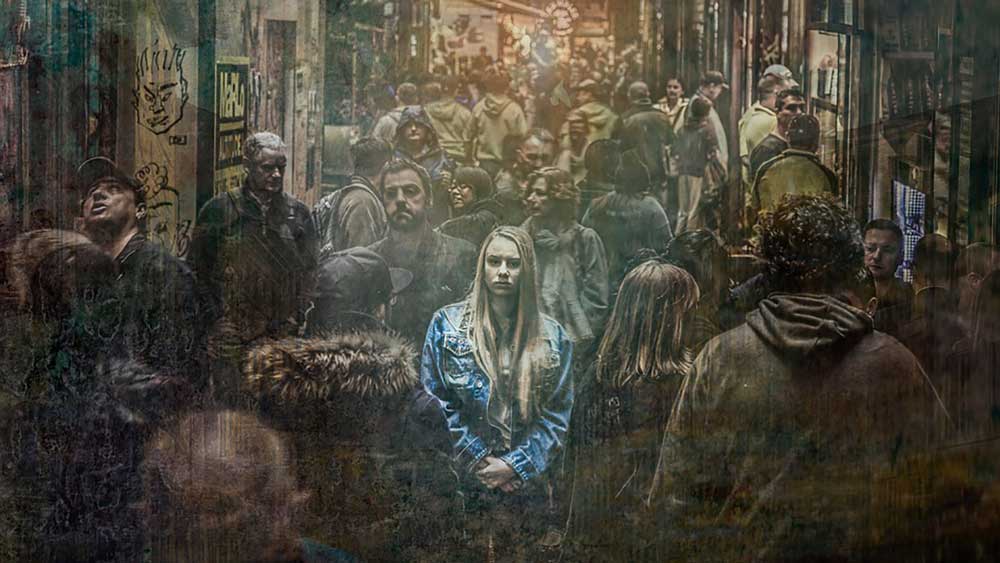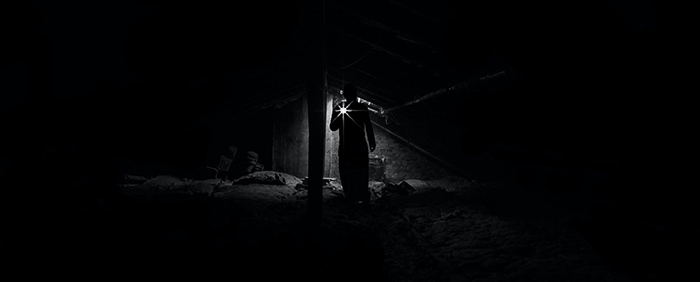
This article, written by a woman and for women, is mainly about situational awareness in an urban scenario where the “follower” can quickly turn into an aggressor. Knowing what to do when being followed can make all the difference between staying safe or becoming a victim.
This is not meant to be the end-all-be-all on how to evade someone when you are being followed on foot or by vehicle. However, it offers several ideas and concepts to keep in mind and put into practice if necessary. You can train yourself in anticipating danger if you can count on an inquisitive mind and personal preparedness.
The Problem of Human Trafficking
According to UNODC (2018) – Global Report on Trafficking in Persons 2018: “Adult women account for nearly half (49 percent) of all human trafficking victims detected globally. Women and girls together account for 72 percent, with girls representing more than three out of every four child trafficking victims. More than four out of every five trafficked women and nearly three out of every four trafficked girls are trafficked for the purpose of sexual exploitation.”
Between 7,000 to 9,000 victims are trafficked annually with 49,000 reported in the last 10 years only in the United States. In 2017, the National Human Trafficking Hotline disclosed 8,524 suspected human trafficking cases. Kidnappings are reported by the thousands on a daily basis, roughly 800,000 children are dispatched missing each year in the U.S. These are certainly alarming numbers.
The rate of sexual harassment as well as sexual violence perpetuated on the streets is dramatically high, especially inside big cities, where the percentage of crimes against women shows absolutely no signs of stopping.
The United Nations Office on Drugs and Crime (UNODC) reported: “In 2017, more than half of the world’s 87,000 female homicide victims were killed by intimate partners or family members. That’s six women killed every hour by someone they know.“
Prevention: Make Yourself a Difficult Target
Let’s first start considering our daily routine under a brand new perspective to develop situational awareness. By doing this, we will be able to handle tough situations which require a high level of self control.
The Danger of the Daily Habit
As we are creatures of habit, we all have a list of things we have to do every day: taking care of our family, duties, house chores, grocery shopping, and so on. Being an easy target means, tout court, doing the same thing in the same order every day. It means you are predictable.
Breaking your daily habitual routines is a good start to being less predictable and a becoming a more difficult target. A person who dedicates himself to observe, even spy, on you will be caught off guard by this sudden change of “behavioral pattern.” A break in your routine indicates:
- independence,
- strength,
- self control, and
- prevention.
By breaking your routine, you will become a more difficult target for the person you may not even be aware of, who is unlikely to be spotted, who has been watching your routine for days.
How To Develop Situational Awareness (S.A.)
Situational awareness can be defined as: “the perception of environmental elements and events with respect to time or space, the comprehension of their meaning, and the projection of their future status” (Endsley, 1995). Noticing what is “out of balance” is the first step achieving this.
In fact, if you are able to detect the outliers, you will have the mental and physical tools necessary to handle a potentially dangerous situation. Some of the skills needed are:
- knowledge,
- application of common sense,
- capability of reasoning,
- capability to act, and
- capability to understand which the best weapons at your disposal are.

Our Instinctual Responses
Imagine, for example, you are stopped at a red pedestrian light. You notice an odd person at the crosswalk. The temperature is around 65 F and he’s wrapped in ten different layers, certainly not appropriately dressed. Then he looks at you longer than any stranger should.
Let’s examine how we might observe and process this information from a situational awareness standpoint.
Our instinctual response is likely to involve:
- PHYSICAL DISTANCE: stepping away as a form of self protection
- MUSCLE RIGIDITY: we feel uncomfortable
This certainly happens to be a primordial impulse. But are actions driven by fear the best response?
Not this time. It is just a matter of taking precautions. In this case, our situational awareness has been “put in use” by a specific causal agent: the view of an over-dressed man on a hot day with a lingering gaze. Definitely an outlier!
The sight of this person probably left us with an odd sensation. We may have a physical reaction. We may even want to take a shower, despite never having any physical contact with him.
Why do we feel this way?
Our “physical comfort zone” has been undermined by the mere view of an individual we consider, on a gut level, to be a potential danger. We feel a chill on our spine. He’s staring at me.
Following our instinct, we probably begin to walk away very rapidly. We think we can leave the stranger behind by taking advantage of the mob in the streets and trusting our agility. Our comfort zone, physical and mental, has now been endangered. We do our best to avoid the situation.
We shouldn’t be unprepared and disoriented, but reasonable and alert.
What we need to do instead is:
- keep calm,
- stick with other people, and
- not abandon public places.
Without knowing an effective reaction, situational awareness is worthless. Our mind should always be inquisitive and alert, because it’s clear how fast fear can take over our mind and body.
Additionally, situational awareness should prepare us to develop the competence to plan our next moves.
What To Do if Being Followed on Foot

In case you might find yourself being followed in the city:
- control your nerves;
- control your breathing (you can use the tactical method of breathing: inhale for 4 seconds, hold for 4 seconds, exhale for 4 seconds and so on);
- do not accelerate your movements or the pace of your walk;
- scan the area where you are in and consider the possibility of entering a building to call for help; and
- make turns only if you are in a populated area.
Physical agility is nice to have, especially if you are being followed by someone on foot. Blending in with the crowd is always a good option, but even better is to walk toward a shopping mall or other busy place where you can take advantage of several different spaces; shops, elevator, stairs, terraces, and so on.
By reducing visibility of your silhouette you can have an advantage, gaining time to understand if he/she is still following you and, mostly, to call for help.
What to Do if Being Followed by Car

Let’s now consider a scenario in which you are followed by a car. Two different scenarios should be contemplated:
- If you are walking in a city, you should absolutely avoid any isolated area where you might not find any escape route and you could be an easy target.
- If you are in the car, don’t try to put yourself in any potentially dangerous situation by trying to outrun the other vehicle by speeding up or emulating Fast & Furious.
In both cases, keep calm and don’t let the other person take advantage of you by doing rash things driven by fear. Take control of the situation by driving onto highly trafficked streets. Take note of the license plate of the car that is following you.
If, after making several turns (as no one usually drives in a circle), you still have a vehicle behind you, dial 911. Trust your gut. It is not a coincidence. At all.
If you find yourself stranded in the middle of nowhere, don’t approach the stranger. Stay locked inside your vehicle, and immediately call the police.
Personal Defense Strategies When Being Followed
“Nothing in life is to be feared. It is only to be understood.” – Marie Curie
Fear is the most difficult feeling to tame. For this reason, commit yourself to the following:
- to grow your preparedness,
- to cultivate and take care of a healthy body,
- to develop an open mind,
- to be careful and pay attention to details around you,
- to know your area and check for any escape routes, and
- to create plans and put them into action.
Consider selecting some tools you can keep in your bag or backpack which can turn into useful allies when a threat is present. If you do, you need to become familiar with:
- each of them,
- the place you put them, and
- how you might use them.
Carrying a pocket knife is not legal everywhere (check your state’s knife laws). I carry the following items:
- a powerful whistle,
- two small flashlights on a keychain, and
- pepper spray.
A “secret weapon” I use in a dangerous situation, and it weighs nothing, is my voice.
I reckon this may sound funny, but as a former screamer/growler vocalist of extreme metal bands, I am perfectly able to produce a scary voice whenever I want. The application of that voice can sound “satanic” and can be an element of enormous distress to a potential aggressor.
In the end, always use your brain and common sense. Real life is not an emulation of action movies; sometimes, the most reasonable thing to do is also the easiest and the most effective. Now you know what to do if being followed on foot or by vehicle.

2 comments
I find many people misunderstand the difference between being cautious and being paranoid or acting cocky in non-threatening situations, but then totally oblivious in situations and places where their guard should be up.
I’ve come to learn that human trafficking is a huge problem and yet so many people are ignorant and clueless to the extent of which it has spread and how close to home it is for all of us.
I always like to read your articles miss Walken.
I appreciate your point and you find me more than agree on human trafficking: it’s a plague. Thanks a lot for your kind words, Frank!